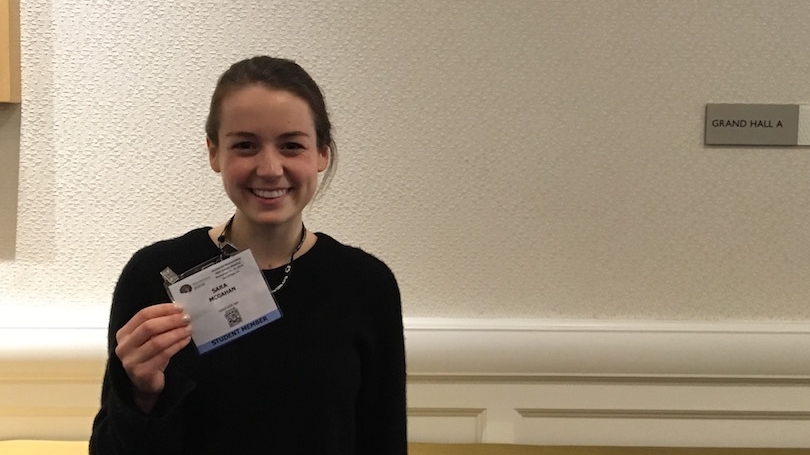
- Public Policy
- Leadership
- Funding
- News & Events
- About the Center
Back to Top Nav
Back to Top Nav
Back to Top Nav
Back to Top Nav
This November, I traveled to San Diego to attend the Society for Neuroscience’s Annual Meeting. I am majoring in neuroscience at Dartmouth, and I was given the opportunity to attend the conference as part of my neuroscience seminar class. I, along with 15 of my classmates and my professor, joined more than 30,000 others interested in cutting edge neuroscience researcher for five-days packed with lectures, symposiums, mini-symposiums, and posters. Throughout the term, my peers and I discussed in class many of the prominent topics that were being presented at the conference. While at the conference, I engaged with the researchers who wrote the papers we had discussed in class.
During my time at the conference, I specifically focused on learning more about the blood-brain barrier. My classmates and I had discussed the blood-brain barrier in class briefly, but it was not one of the main topics we focused on, and I wanted to learn more about its structure and function. The blood-brain barrier is the central nervous system’s defense system. Structurally composed of cells tightly linked together by proteins, the blood-brain barrier protects the brain from neurotoxic chemicals that may flow through the blood stream. Though important for brain homeostasis, because the blood-brain barrier only lets a very small amount of molecules into the brain, it poses a significant challenge for administering neurologic drugs.
Recently, researchers have begun to develop novel ways to transiently bypass the blood-brain barrier in order to administer drugs to the brain. These techniques provide potential treatment solutions for currently un-curable neurodegenerative diseases. For example, a new technology called focused ultrasound can transiently disrupt the permeability of the blood-brain barrier in a specific part of the brain. At the conference, I spoke with researchers who presented innovative research showing that focused ultrasound used in conjunction with pharmaceuticals shows promising results in rat model of neurodegenerative diseases. While much research remains to make this a viable treatment option, it’s an exciting and active area of research that has the potential to benefit many in future years.
In conclusion, attending this conference was a very valuable experience. Though the majority of my coursework at Dartmouth has centered on neuroscience, I have never been surrounded by so much excitement about the discipline. I was able to engage and discuss topics in neuroscience that I had spent four years studying at Dartmouth. I was surprised at how much I knew even as an undergraduate neuroscience student, as well as how much I did not know.
- Submitted by Sara McGahan '17, Rockefeller Mini-Grant Recipient
The Rockefeller Center's Mini-Grants program funds registration fees for students attending conferences, as well as the costs of bringing guest speakers to Dartmouth. The views and opinions expressed here are the author’s own and do not necessarily represent the views and opinions of the Rockefeller Center or constitute an endorsement by the Center.